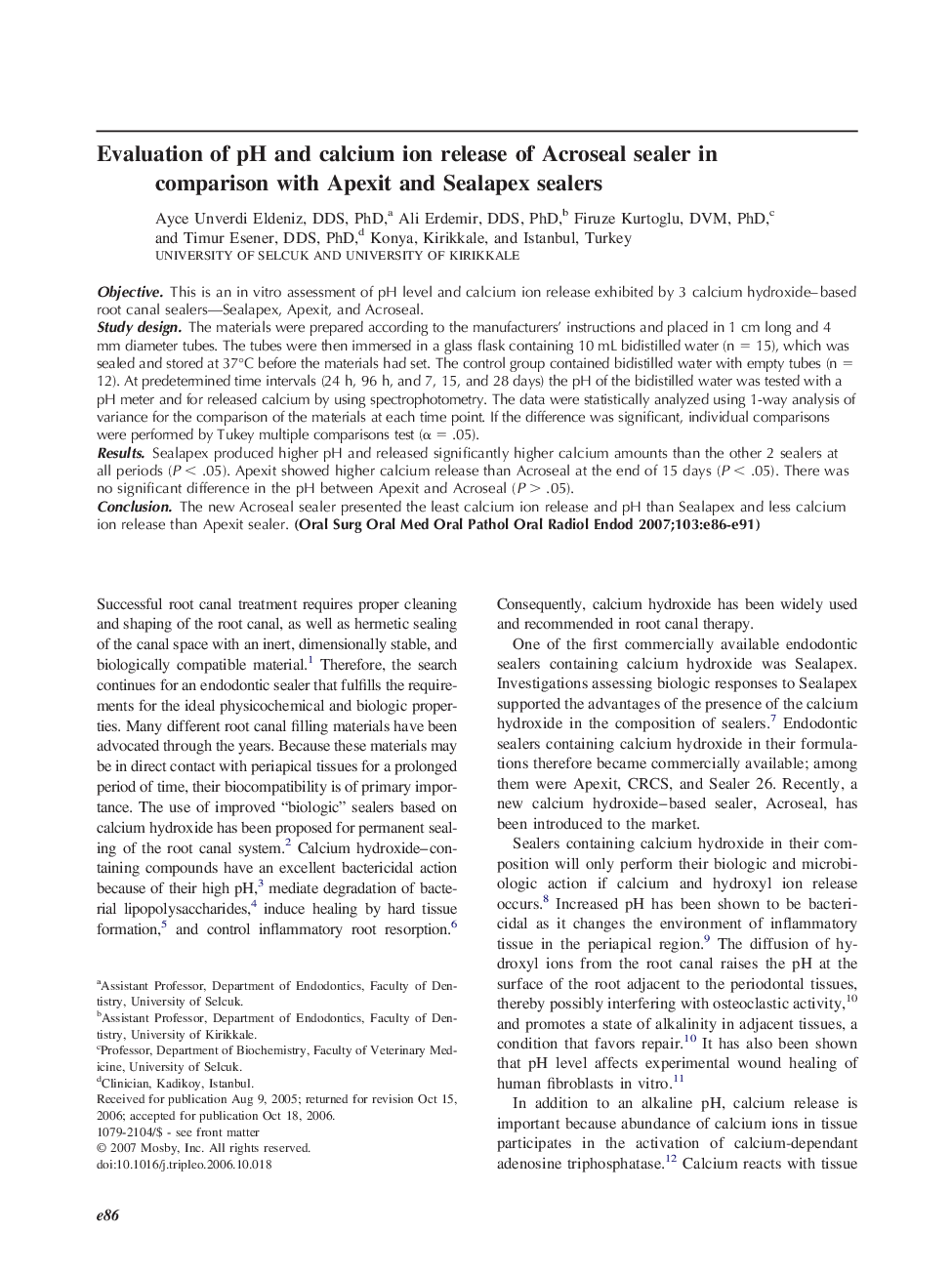| Article ID | Journal | Published Year | Pages | File Type |
|---|---|---|---|---|
| 3169549 | Oral Surgery, Oral Medicine, Oral Pathology, Oral Radiology, and Endodontology | 2007 | 6 Pages |
ObjectiveThis is an in vitro assessment of pH level and calcium ion release exhibited by 3 calcium hydroxide–based root canal sealers—Sealapex, Apexit, and Acroseal.Study designThe materials were prepared according to the manufacturers’ instructions and placed in 1 cm long and 4 mm diameter tubes. The tubes were then immersed in a glass flask containing 10 mL bidistilled water (n = 15), which was sealed and stored at 37°C before the materials had set. The control group contained bidistilled water with empty tubes (n = 12). At predetermined time intervals (24 h, 96 h, and 7, 15, and 28 days) the pH of the bidistilled water was tested with a pH meter and for released calcium by using spectrophotometry. The data were statistically analyzed using 1-way analysis of variance for the comparison of the materials at each time point. If the difference was significant, individual comparisons were performed by Tukey multiple comparisons test (α = .05).ResultsSealapex produced higher pH and released significantly higher calcium amounts than the other 2 sealers at all periods (P < .05). Apexit showed higher calcium release than Acroseal at the end of 15 days (P < .05). There was no significant difference in the pH between Apexit and Acroseal (P > .05).ConclusionThe new Acroseal sealer presented the least calcium ion release and pH than Sealapex and less calcium ion release than Apexit sealer.
